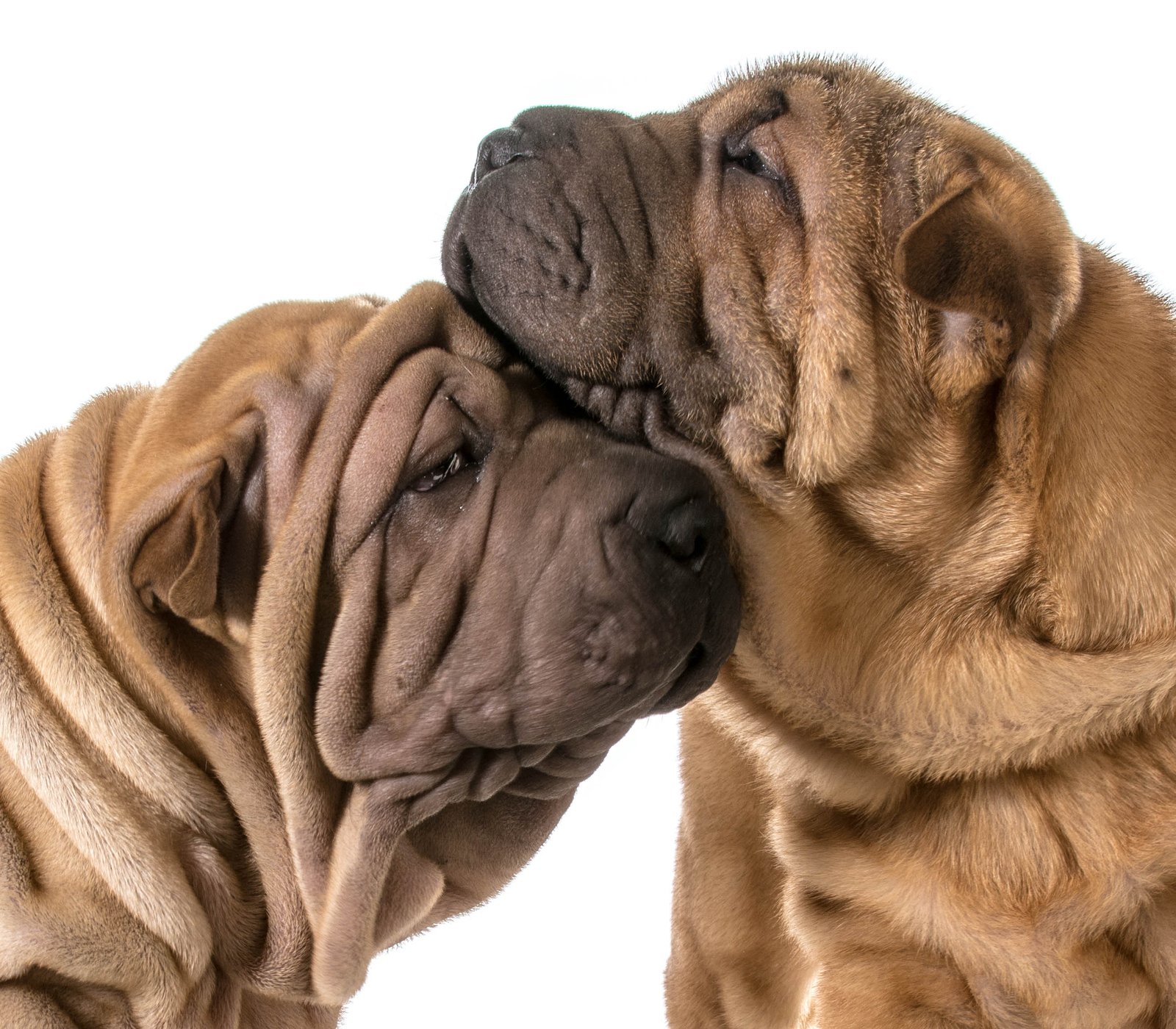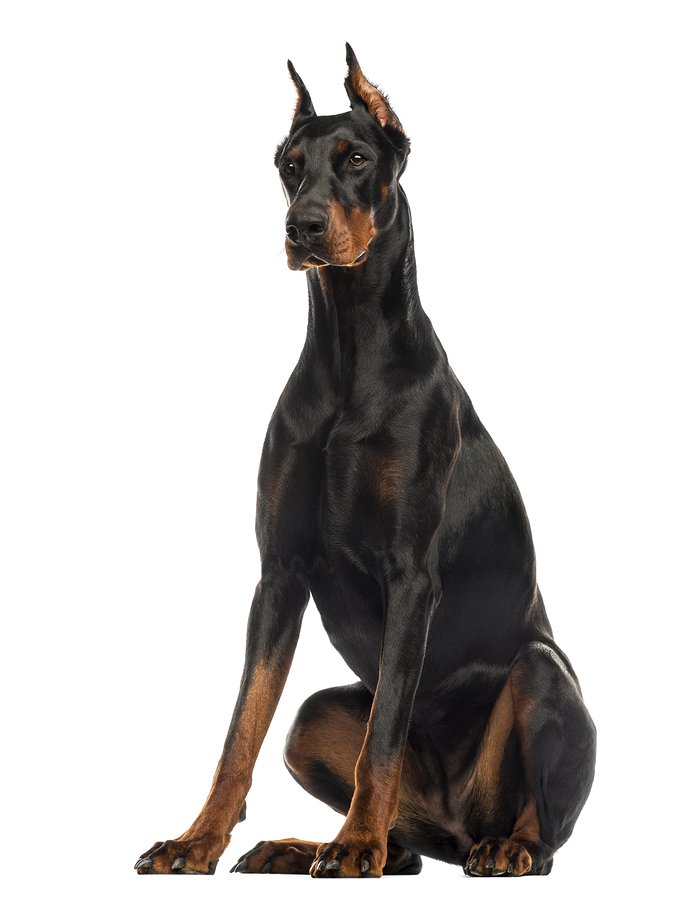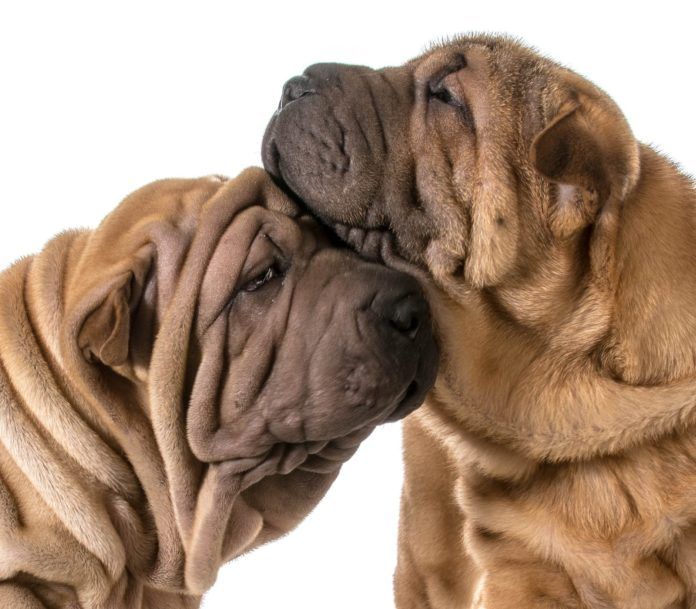It sounds like a world gone mad. Face lifts, breast reductions, and tummy tucks may be covered by pet health insurance when procedures more commonly associated with dogs, like tail docking, aren’t. What’s going on?
Bigstock

It has to do with whether the operation is medically necessary. Consider Sesame, a two-year-old shar pei that came to the special attention of the San Antonio Humane Society because his skin folds, characteristic of the breed, were so dramatic that they dipped over his eyes to the point that the dog simply could not see. The folds also covered his ears, making the young dog prone to developing yeast infections; a foul odor surrounded him.
Shar peis are vulnerable to begin with. Without significant cleaning between their skin folds, infections and the accompanying odor are not uncommon. But in Sesame’s case, breeding to enhance the characteristic wrinkles (“shar pei,” roughly translated, means “sand skin”) left him with so much extra skin that he developed entropion — his eyelids were pushing into his eyes. He required two face lifts to remove several inches of skin and relieve him of his disability. Unfortunately, Sesame’s inability to see during his first two years combined with the pressure on his eyes damaged his vision; veterinarians believe he can see only shadows.
Then there is Obie, the seven-year-old dachshund, who successfully dieted down 55 of his 77 pounds, leaving him at a svelte 22 pounds. His overall health improved dramatically, but he was left with 2.5 pounds of skin once held up and out by body fat. A tummy tuck, in his case, was a needed medical procedure — not for vanity, but to enable the dog, whose short legs left him close to the ground, to walk without tripping over the vestige of his former self.
“Breast” reduction surgery in a dog can be a medical necessity, too. Dogs who have been made to breed repeatedly may have breasts so stretched as to cause debilitating soreness. Sometimes they even drag along the ground. There are also oral surgeries performed not to create a dazzling smile but to restore a bite so that a dog can eat properly. And a veterinary surgeon will perform rhinoplasty, or a nose job, not to beautify but to help brachycephalic breeds — flat-nosed breeds such as pugs and English bulldogs — breathe without struggling.
The breed’s the thing
The almost velvety-looking wrinkles on a shar pei; the short, broad head and flat face of a brachycephalic dog that give it an adorably smushy appearance — unfortunately, breeding for specific physical traits that people find aesthetically pleasing is what leads to much of the necessary surgery to change a dog’s appearance in order to fix a medical issue.
Bigstock

Perhaps most disturbing is the breathing handicap. “Nothing is more important to a living being on a second-to-second basis than being able to breathe, but a number of brachycephalic dogs must have surgery in order to breathe normally,” says John Berg, DVM, the editor-in-chief of Your Dog. “When humans have created breeds of dogs to perform certain functions, that has generally been fine. However, creating breeds of dogs to look a certain way is is often less fine from a medical standpoint.”
The first question people often ask when they hear you’re getting a dog, says Dr. Berg, is “What kind?” That is, they want a picture in their heads. But all breeds, he notes, are created by inbreeding. They are all descendants of wolves, from the 180-pound Great Dane to the five-pound Chihuahua. “These breeds wouldn’t occur without man creating them,” says Dr. Berg. And the mindset that puts emphasis on what a dog looks like can create the problems that require a surgerical solution.
Rob Halpin, the public relations spokesperson for the American Society for the Prevention of Cruelty to Animals’ Massachusetts chapter, the MSPCA, concurs that the emphasis on dogs looking a certain way can lead to problems. “Sometimes breeding is too much of a good thing when it comes to issues like the folds of skin covering the eyes, and is always too much of a bad thing so long as there are animal shelters filled to the rafters with homeless pets.”
When beauty’s only name is vanity
It’s not always about repairing a physical attribute that is keeping a dog from living comfortably and healthy. Sometimes owners elect to have their dog undergo a surgery for truly cosmetic reasons only, and they are willing to pay out of pocket because pet health insurance companies will not reimburse the costs of such operations. A case in point: Dr. Berg speaks of the owners, often male, who have brought their male dogs to the Tufts clinic to be neutered, and at the same time have requested testicular implants to create an intact appearance. Tufts does not perform those procedures. Says Dr. Berg, “you’re putting this piece of plastic in a scrotum and asking for potential infection and fluid accumulation — we added this to our list of cosmetic surgeries we won’t do.”
Certainly, dogs do not care how they look; it’s not part of their psyches. Even dogs that have had amputations for medical reasons are perfectly happy as long as they can get around. No wonder a web site for artificial testicles states that its product “aids the pet’s owner with the trauma associated with altering.” The trauma is all the owner’s, not the pet’s.
Some purely cosmetic surgeries on dogs are driven by owners’ desires to have their dogs meet a breed standard. A number of surgeries meant to accomplish that goal are listed in a “Cruelty Glossary” put together by the ASPCA.
Among them:
- ear cropping, in which roughly half of a dog’s ear, the floppy pinna section, is removed so the ear will stand upright.
- tail docking, in which a dog’s tail is removed.
Many groups decry surgeries performed on dogs and other animals for purely cosmetic reasons or reasons of convenience. Some people go so far as to have their dog’s dewclaw removed just to help it meet a breed standard. And there have been landlords who required both cats and dogs to be declawed to keep the pet from scratching the floor with sharp nails. (Both California and Rhode Island have passed laws making it illegal for landlords to demand declawing, and legislation is pending in several other states. If you live in public housing, it cannot be demanded of you that you declaw your pet.)
Explains the MSPCA’s Mr. Halpin, “basically we only perform surgeries that are deemed medically necessary to reduce suffering or help an animal patient heal from illness, injury.” For instance, he says, “we often do surgeries to reduce the folds around the faces of shar pei dogs because they can become infected and cause tremendous discomfort. I suppose it could be thought of as cosmetic… but it would never be done purely for that purpose. We are wholly opposed to cosmetic surgery on pets, and we do not perform it. The MSPCA also does not condone de-vocalizing surgeries, which are done for people’s convenience rather than for animals’ health.” (Again, in California and Rhode Island, landlords may not demand de-vocalization.)
Many countries in Europe actually have laws on the books that make cosmetic or convenience surgeries illegal. As an addition to its 2006 Animal Welfare Act, England, soon followed by Wales and Scotland, banned the docking of any animal’s tail. Tail docking amputates all or part of a dog’s tail so that bone, cartilage, muscles, and tendons are severed along with the visible part. In one method for removing the tail, a rubber band is wound around the base of the tail, cutting off blood flow so that within several days, the tail simply falls off. This procedure does not even require surgical stitches, which makes it sound fairly no fuss, no muss.
The problem, aside from the ethical issue of whether it’s right to alter an animal’s appearance to please its owner, is that years later, pain may arise from nerve scar tissue at the site. “Tail docks can occasionally result in neuromas — little scarred nerve endings that can be a problem,” says Dr. Berg. “That can make the dogs have pain in their tail.”
The loss of the tail also prevents a dog from utilizing his ability to express emotion, as anyone who has been welcomed home by his tail-wagging companion, or who has seen a dog’s tail cower as a sign of fear or submission, knows.
Even as far back as 1854, eminent London veterinary surgeon William Youatt summed up tail docking for appearance as “indefensible” in his book, The Dog. The procedure back then was thought to protect hunting dogs, particularly pointers, from having their tail caught in underbrush during a chase. Arguments such as these are still used today, even though the majority of pointers and other hounds are not at any real risk of tail injury. They spend their days sniffing the sidewalk, not in the fields looking for animals.
Anther common reason given for tail docking by owners today is concern that a guard dog or police dog will be grabbed by his tail or that long-haired breeds with hanging tails may soil themselves. Again, the concerns are not medical ones.
Unfortunately, directly or not, the American Kennel Club may influence some people’s decisions to elect medically unnecessary surgeries. To be sure, the AKC does state clearly that ear cropping, for example, is up to an owner or breeder and there is “nothing in AKC rules and in fact nothing in any breed standard that compels an owner to have this procedure performed as a prerequisite to entry at a dog show.” Dogs not altered to show breed standards have the “same potential to win,” the organization says. But at the same time, on its online “Frequently Asked Conformation Questions” page, the AKC says that ear cropping, tail docking, and dewclaw removal are recognized as “acceptable practices integral to defining and preserving breed character.”
Unnecessary ear cropping tends to be performed particularly on Great Danes and Doberman pinschers to create their iconic, alert appearance. There are some who attest that surgically removing the floppy portion of the ears and then bandaging the ears so that they will heal in an erect position make ear infections less likely, although there is little statistical evidence for this. Also important, like tail docking, ear docking can do more
than change appearance. Keep in mind that dogs may use their ears to be expressive just as much as they use their tails. According to the ASPCA, dogs raise their ears higher on their head and direct them to whatever has piqued their interest; they may also push forward and raise up their ears to signal aggression; or pull them back to show friendliness. Fully flattened ears demonstrate submission. Like with tail docking, dogs who have had their ears surgically modified lose a part of their ability to communicate through body language to their human family and other dogs.
It should be noted that the AKC’s exclusive pet insurance provider, AKC Pet Insurance, does not cover purely cosmetic surgery, according to its marketing manager, Jessica Calise. “If a licensed veterinarian deemed something medically necessary for health reasons, it would be eligible for coverage but like all things, it would have to be reviewed,” she says. “We do not cover elective cosmetic surgery.”
Given that surgical procedures performed to correct medical problems that arise from creating dogs with a certain physical appearance are typically approved by insurance providers, and that insurance providers typically do not cover purely cosmetic surgeries, it may be time to rethink what matters most when looking at a dog.





